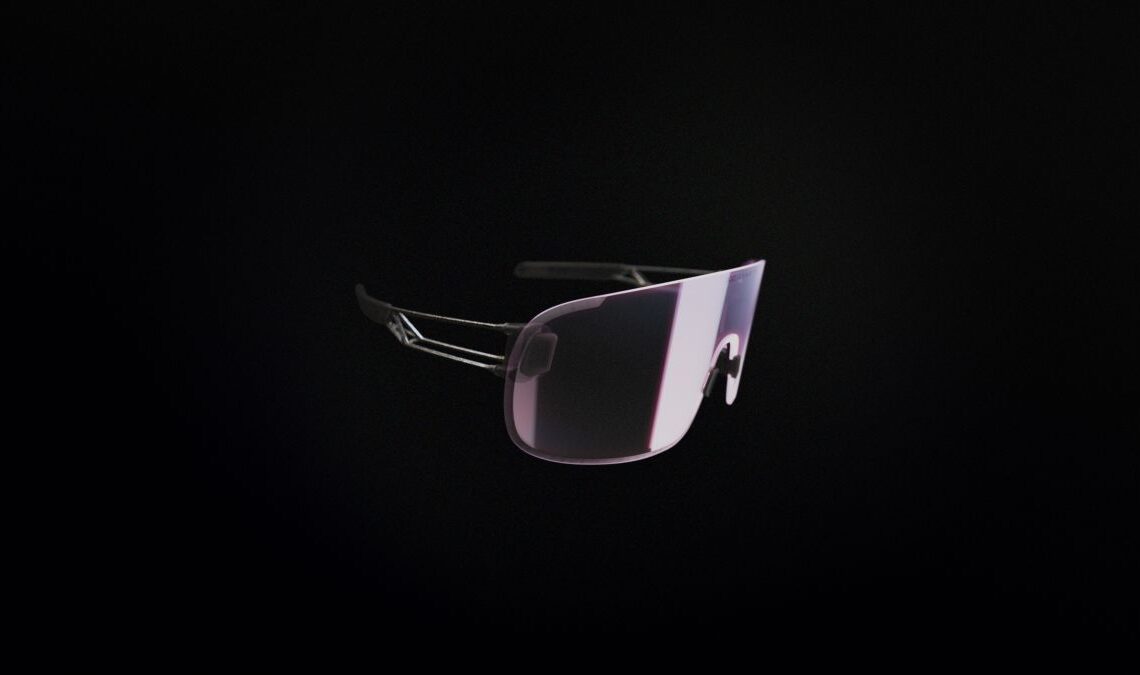Let’s get what will for many be the talking point out of the way early; these titanium sunglasses are going to set you back £350/$400/EUR400. We can’t think of a set from a major brand that even comes close to that, even amongst the very best cycling glasses. That being said, none of them are 3D printed from titanium either, so it’s no great surprise that there’s a premium price tag.
Before we collectively baulk at the price tag, and the fact that these only have a saving of a single gram over the standard POC Elicit sunglasses, it’s worth remembering that they are a limited edition, so it’s probably best to see them as a proof of concept for now rather than something for mass production.
3D printed arms
The Elicit Ti is effectively the same construction as the standard Elicit, a set of shades we rated extremely highly. The Clarity lens, interchangeable nose pieces, and the way the arms snap on and off the lenses for a lens swap are unchanged. The real difference is in the arms themselves. The already skeletal Elicit plastic arms have been replaced by a pair of truly emaciated titanium arms, each consisting of 9 or so extremely thin filaments in a truss formation. The rubberised temple grippers are then slid over this skeleton to help grip.
Yes, titanium is an extremely stiff material, but like all things if you make it narrow enough it will flex (think glass in fibre optic cables for example). The filaments of the arms are diminutive enough to allow the arms to flex and grip the head in the same way plastic arms would. Given the limitations of 3D printing, there are no hinges on this model, so it’s either on your face or in the helmet vents for storage, or to pack away into a case you’ll have to remove the arms.
Reclaimed waste for a more sustainable production
3D printing in titanium is a little different to doing so with composites. Given the melting point of Ti is over 1500 degrees Celsius you can’t extrude it into shapes. Instead, intricate shapes are built up in layers by locally melting a powdered alloy with a high-powered laser. After each layer has been melted a new film of powder is evenly distributed over the printing area and another layer is melted on. At the end of production you end…
Click Here to Read the Full Original Article at CyclingNews RSS Feed…

